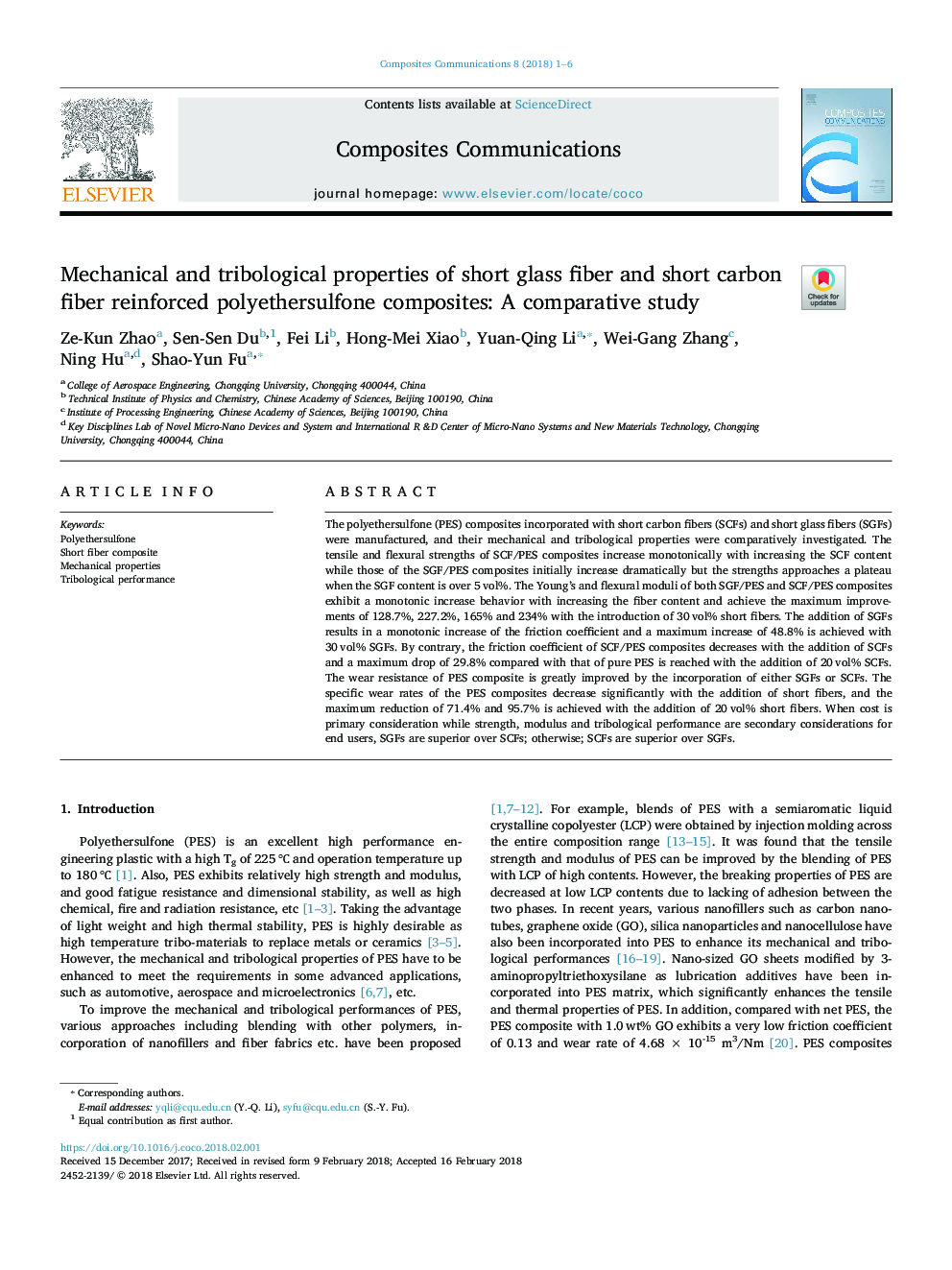| Article ID | Journal | Published Year | Pages | File Type |
|---|---|---|---|---|
| 7857399 | Composites Communications | 2018 | 6 Pages |
Abstract
The polyethersulfone (PES) composites incorporated with short carbon fibers (SCFs) and short glass fibers (SGFs) were manufactured, and their mechanical and tribological properties were comparatively investigated. The tensile and flexural strengths of SCF/PES composites increase monotonically with increasing the SCF content while those of the SGF/PES composites initially increase dramatically but the strengths approaches a plateau when the SGF content is over 5â¯vol%. The Young's and flexural moduli of both SGF/PES and SCF/PES composites exhibit a monotonic increase behavior with increasing the fiber content and achieve the maximum improvements of 128.7%, 227.2%, 165% and 234% with the introduction of 30â¯vol% short fibers. The addition of SGFs results in a monotonic increase of the friction coefficient and a maximum increase of 48.8% is achieved with 30â¯vol% SGFs. By contrary, the friction coefficient of SCF/PES composites decreases with the addition of SCFs and a maximum drop of 29.8% compared with that of pure PES is reached with the addition of 20â¯vol% SCFs. The wear resistance of PES composite is greatly improved by the incorporation of either SGFs or SCFs. The specific wear rates of the PES composites decrease significantly with the addition of short fibers, and the maximum reduction of 71.4% and 95.7% is achieved with the addition of 20â¯vol% short fibers. When cost is primary consideration while strength, modulus and tribological performance are secondary considerations for end users, SGFs are superior over SCFs; otherwise; SCFs are superior over SGFs.
Related Topics
Physical Sciences and Engineering
Materials Science
Biomaterials
Authors
Ze-Kun Zhao, Sen-Sen Du, Fei Li, Hong-Mei Xiao, Yuan-Qing Li, Wei-Gang Zhang, Ning Hu, Shao-Yun Fu,
